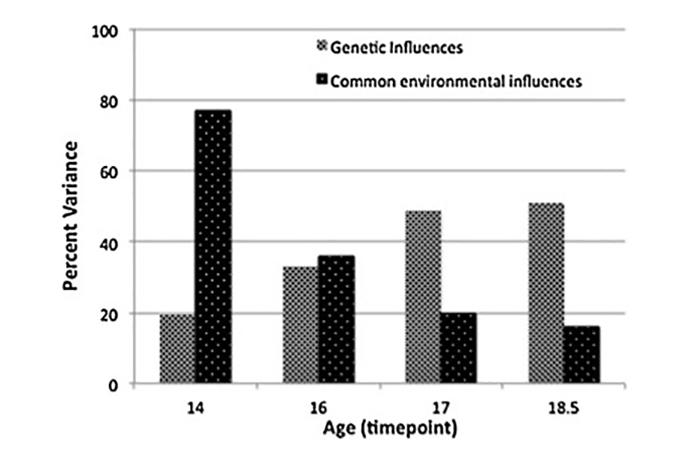Do Genetic and Environmental Influences Affect Adolescent Drinking?
January 10, 2017

When it comes to problems with alcohol use, genes play an increasingly important role as you get older. But scientists still struggle to pinpoint exactly which genes are most to blame.
An article entitled “Genetic Influences on Adolescent Behavior,” published in November 2016 in the journal Neuroscience and Biobehavioral Reviews by COBE researchers Dr. Danielle Dick, Dr. Amy Adkins and Dr. Sally Kuo looked at prior studies on adolescent twins, pathways of risk and specific genes that impact alcohol outcomes in an effort to unite this information to be used for prevention and intervention programs at VCU and beyond.
In the article, Dr. Dick and co explain that psychology as a whole can be boiled down to a study of nature versus nurture, genes versus the environment, and using these relationships to predict and treat positive and negative outcomes.
Over time researchers have discovered that the environment and genes both play an important role in development, but that their relative importance changes throughout one’s life.
In alcohol use and misuse, genes and the environment both play a big role in determining outcomes. Specifically, researchers have found that the environment is more important when you are younger and that genes are more important when you are older.
As a young person there is less opportunity for your personal traits and character to drive your decision-making, and you are more likely to reflect elements of your environment. But as you get older and have more agency, your personal choices and predispositions become more central.
Beyond agency, aspects of the home environment, peer network and community playing a role in the extent to which genetic predispositions are engendered or diminished. In this way you can have all of the genetic predispositions to put you at risk for alcohol misuse, but if you are never exposed to opportunities to indulge those risks you can avoid that negative outcome.
In this way, the researchers stress that it is important to have a relationship with your own genetic predisposition and to consider the way you self-select into environments that increase or decrease the expression of those risky behaviors.
And although researchers have made great progress in understanding how the nature of genetic effects unfold across adolescence, there has not been equal progress in identifying specific genes that impact key adolescent outcomes.
Beyond that there is a lack of broad, translated research for practitioners and professionals to use while crafting prevention and intervention measures. In that way this study is emblematic of the kind of work COBE aims to do both in terms of science and in terms of research translation into improvements in community health and wellness.
As such the main goal of this study was to bring together the latest research and operationalize it for professionals in treatment and recovery fields to improve outcomes for college students and more broadly members of the community as a whole.
